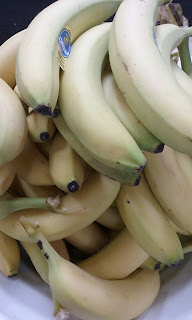HIV is impacted by the foods we eat as much as the medication and other aspects of life. Our experience in dealing with Persons Living With HIV has been to make diet planning simpler for one to relate fatigue and the food breakdown.
We produce these blogs with pictorial illustrations of the range of foods and the balance one can order for. Foods are vital for providing energy, repair, taste and enjoyment. We eat to obtain the energy we need to support our everyday activities and continue promoting our survival. In the case of persons living with HIV, the food choices should not get in the way of the body’s repairing mechanism against inflammation. It is this inflammation that adds to the chronic fatigue burden.
In HIV and Your Foods we gave a simple brief and informative article and went ahead to show why one needs larger all categories of foods with fruits and vegetables in larger portions. As much as possible, the reason we eat should have everything to do with sustenance than taste.
It should be noted that our daily food choices may be influenced by a variety of other factors including the social situations we find ourselves in, our budgets, sleep schedules, and stress levels, as well as the amount of time we have to prepare and eat a meal.
Foods must afford us the right energy balance equation (energy expended vs. energy consumed). In more primitive times, hunters and gatherers foraged for vegetation and hunted animals to eat. They worked hard and expended energy to obtain foods that were not typically calorically dense. As a result, their energy expenditure was more closely balanced with their energy intake. Advances in agriculture and modern farming techniques have provided the opportunity to grow massive quantities of food with far less effort than before. On the other side of the equation, there has also been a dramatic change in our food sources. Today, many food items are highly processed combinations of several palatable ingredients and chemicals. The food industry creates and markets food and beverage products that are engineered to be both desirable and inexpensive. For instance, foods such as corn and wheat are transformed from their original form and combined with salt, fat, sugars, and other ingredients to produce the low cost, high energy food and beverage items that line our grocery store shelves.
Dr. Nicole Avena is a research neuroscientist, author and expert in the fields of nutrition, diet and addiction, say that even though food is essential for survival, not all foods are created equal. Eating certain foods, especially in excess, can produce the opposite effect of sustaining life by compromising our health. Overeating and obesity are on the rise in both the United States and around the world. Despite warnings of the physical health risks associated with increased body weight, the plethora of diet books and programs available, and the stigma associated with excess weight, many people find it difficult to achieve and maintain a healthy body weight. Thus, it is important to consider what other factors are driving weight gain or sabotaging weight loss efforts. It is impossible to avoid the fact that the pleasurable aspects of foods are powerful motivators of our choices.
The basic biology underlying food intake is closely linked to pleasure. Since food is necessary for survival, eating, especially when hungry, is inherently reinforcing. However, eating can be reinforcing even when it is not driven by a caloric deficit. This is why we continue to eat past the point of satiation and eat highly palatable foods like cupcakes and candy bars that aren’t filling. Unfortunately, our natural inclination to consume these types of foods collides with the many influences in our modern food environment—such as convenience, cost, social influences, etc.—to ultimately encourage the overconsumption of highly palatable foods. My new book, Hedonic Eating, examines the various behavioral, biological, and social factors associated with highly palatable food consumption in an effort to offer greater insight into what promotes this behavior and shed light on the different factors that may be involved in perpetuating current obesity epidemic. In the book, expert contributors cover topics ranging from the neurochemistry of food reward to the hotly debated concept of ‘food addiction,’ providing relevant and up-to-date information from the current body of scientific literature. To learn more, order a copy of the book—available today!
Dr. Nicole Avena is a research neuroscientist, author and expert in the fields of nutrition, diet and addiction. She received a Ph.D. in Neuroscience and Psychology from Princeton University, followed by a postdoctoral fellowship in molecular biology at The Rockefeller University in New York City. She has published over 70 scholarly journal articles, as well as several book chapters and books, on topics related to food, addiction, obesity and eating disorders. She also edited the books, Animal Models of Eating Disorders(2012) and Hedonic Eating (2015), coauthored the popular book of food and addiction called Why Diets Fail (Ten Speed Press), and recently finished her new book, What to Eat When You're Pregnant. Her research achievements have been honored by awards from several groups including the New York Academy of Sciences, the American Psychological Association, the National Institute on Drug Abuse, and her research has been funded by the National Institutes of Health (NIH) and National Eating Disorders Association.


































































































